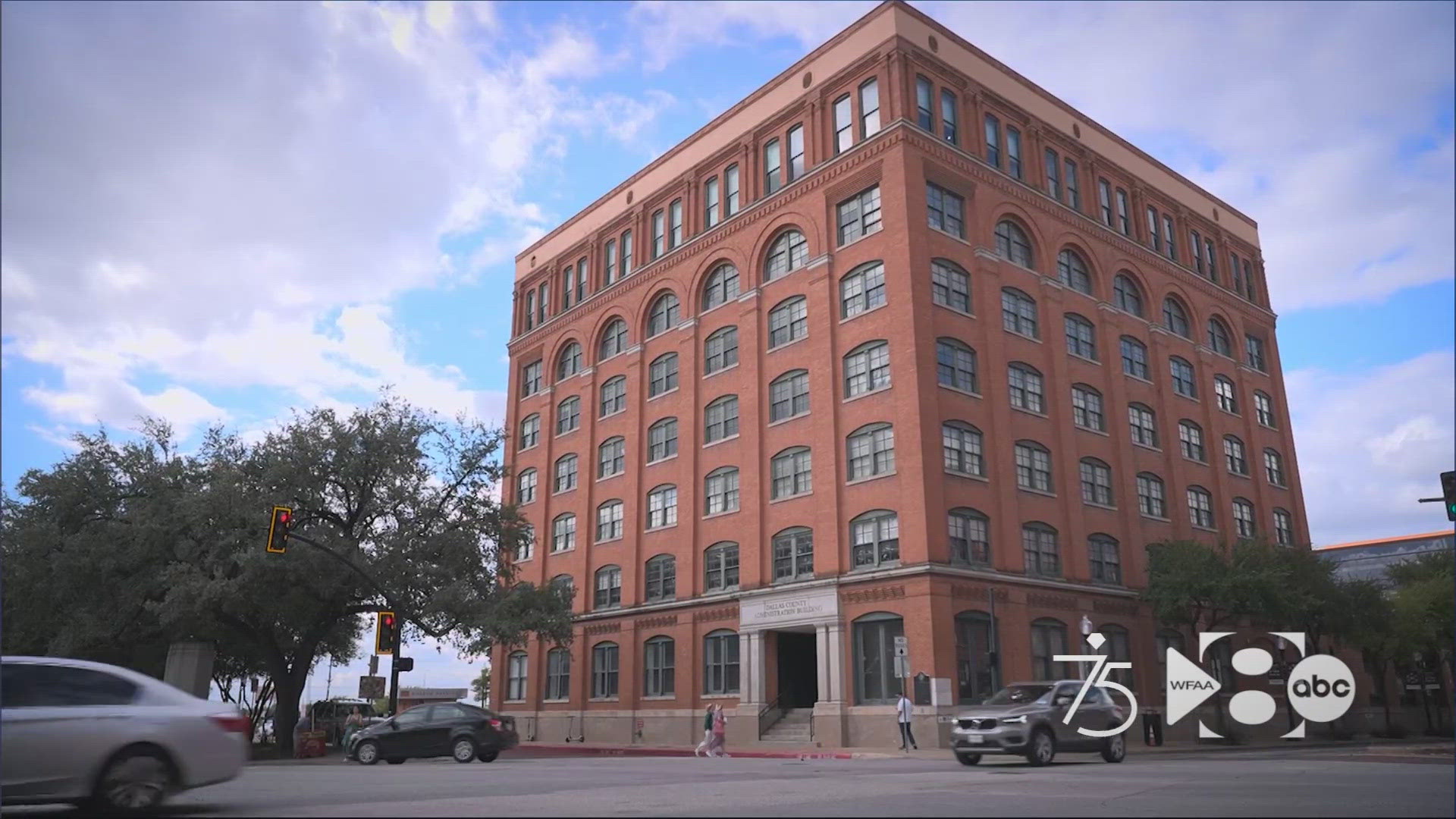DALLAS — At WFAA, it's known as Studio B: the smallest of three production studios on the bottom floor of our broadcast center on Young Street in downtown Dallas. But it has played the biggest role in WFAA's history, serving as a window to the world on perhaps the darkest day in Dallas history.
Jay Watson was the WFAA program director at the time when, on November 22, 1963, station technicians hurriedly cut away from a program called The Julie Bennell Show to reveal Watson out of breath standing in front of a curtain in Studio B, a microphone in one hand, a bulletin from United Press International in the other.
"Good afternoon, ladies and gentlemen. You'll excuse the fact that I am out of breath. But about 10 or 15 minutes ago a tragic thing, from all indications at this point, has happened in the city of Dallas. President Kennedy and Gov. John Connally have been cut down by assassin’s bullets in downtown Dallas."
"It was chaos. Frightening," said Ward Huey, the former Vice Chairman of Belo Corp. and President of Broadcasting for the former owners of WFAA.
Huey's career began at WFAA in 1960, and he still remembers the trauma, pain, and the Dallas shame from that day in 1963.
"The story was so tragic. It was so upsetting to so many people that it was hard to get through it. Very hard to get through it," Huey said.
Studio B at WFAA was where the world first heard from eyewitnesses, like Bill and Gail Newman, ushered into the studio along with their young children.
"It just scared me. It was terrible," Gail Newman said in her interview with Jay Watson.
Assignment editor and chief photographer Bert Shipp raced back to the studio from Parkland Hospital to get his 16mm black and white film developed to be broadcast on WFAA. And he did it with some unintended help. He commandeered the first car he could find.
Former WFAA executive news producer John Sparks remembers Shipp's encounter with a driver stopped near the hospital.
"Bert opens his door, jumps in and says, we're going to Channel 8. And he said, I'm not going to Channel 8. And he said, yeah, you are. Bert steps on that gas pedal and brings that film back," Sparks said.
Studio B is also where another witness was first interviewed on live television. He walked into the WFAA lobby holding a home movie camera with what would become the most important 26.6 seconds of 8mm color film in the JFK investigation.
"May I have your name please sir," Jay Watson asked him.
"My name is Abraham Zapruder."
"And they put him on TV," said former WFAA Operations Manager Craig Harper. "That's how the world knew there was the Zapruder film. The FBI and CBS, the Secret Service showed up wanting to get that film processed."
"The international press corps came to town. Dallas was humiliated in so many ways," Ward Huey recalled. "But it was, it was a long time before I felt we had overcome the shock."
Shock that kept coming. WFAA was also broadcasting to the world when Lee Harvey Oswald was shot and killed two days later.
"Bob Walker WFAA TV Dallas, Texas," the former anchor said in a breaking news broadcast from Studio B. "There's been a shooting at Dallas Police Station as Oswald was being transferred."
"That was all part of the the mystique of this TV station," Harper said of WFAA's effort to be wherever needed to cover the big story. "To have Abraham Zapruder sort of walk in the door, to be at the right place at the right time. I don't think that's luck. I think that's smart people doing smart things."
And from that moment on, WFAA was a different place. A station that at the time only worked with 16 millimeter black and white film and transferred it to 2-inch reel to reel video tape to get it on television, and a station with a large bus it utilized to carry massive cameras and equipment to do live remotes, suddenly realized it would need to modernize and remain on the cutting edge to continue being a window, not just to North Texas, but to the entire world.
"At that day and time, there was no color, there was no cable, there was no satellite, there was no internet, there was no high-definition television, nobody had ever heard of digital," Ward Huey said. "And all of a sudden what had been local live was live worldwide. It was breathtaking."
Today we still tell stories from Dealey Plaza, our neighbor just those four Dallas city blocks away: the tributes, the commemorations, and the conspiracies it continues to bring.
But on that dark day in 1963, the events of Dealey Plaza put WFAA to the test.
"This is this is the best television station in the country," an admittedly biased John Sparks added. "Was the best, is the best and, there's a reason for it."
Reasons that include the echoes in WFAA Studio B of November 22, 1963.

